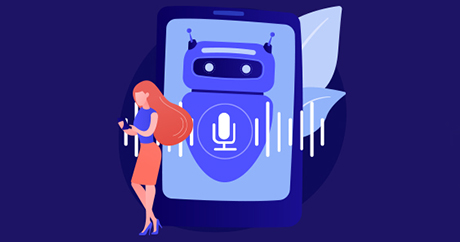
- softwaresushi
Building a Recipe Assistant with AI
Imagine having a virtual assistant that understands user preferences, context, and queries with precision—providing relevant and tailored responses in seconds. This is the promise of an AI-powered chatbot, a tool designed to make interactions more intuitive, efficient, and personalized using OpenAI API and Retrieval-Augmented Generation (RAG) frameworks such as LangChain.
Problem
The internet is flooded with information, forums, and resources, making it difficult to find precise and relevant answers. While this abundance is useful, it also presents challenges:
- Time-Consuming Searches: Finding accurate and relevant information often requires sifting through multiple sources, making the process inefficient.
- Information Overload: Many sources include unnecessary details or lengthy explanations, making it hard to extract the key insights users need quickly.
- Lack of Personalization: Generic responses often fail to consider individual preferences, past interactions, or contextual nuances, leading to less effective communication.
- Limited Context Awareness: Traditional search engines or static FAQ systems struggle to provide responses based on previous queries or user-specific data, requiring users to rephrase or search repeatedly.
These challenges highlight the need for a smarter, more efficient solution—one that leverages AI to deliver personalized, context aware interactions in real-time. In the next sections, we’ll explore how combining the OpenAI API with LangChain can address these issues and revolutionize AI-driven communication.
Architecture Overview
1. Key Components
The chatbot consists of the following core components:
- FastAPI Backend: Manages API endpoints for document ingestion and querying.
- OpenAI GPT Model: Generates responses based on retrieved context.
- Pinecone Vector Database: Stores document embeddings and enables similarity search.
- Text Processing Services: Extracts and preprocesses text from PDFs and text files.
- Logging & Error Handling: Ensures robust monitoring and fault tolerance.
2. Workflow (Diagram TBD)
1. Document Ingestion:
- Users upload files (PDFs or text) via the FastAPI endpoint.
- Text is extracted and split into smaller chunks with metadata.
- Chunks are converted into vector embeddings and stored in Pinecone.
- Query Processing:
- The user submits a query.
- The system retrieves relevant document chunks from Pinecone.
- The context is refined, and GPT generates a final response.
- Response Generation:
- The retrieved context is used to generate a well-informed answer.
- The response includes relevant references to the source documents.
Setting Up the Environment with Docker
Step 1: Creating the Dockerfile
Create a Dockerfile for the FastAPI backend:
Python
# Use an official Python runtime as the base image
FROM python:3.9-slim
# Set the working directory in the container
WORKDIR /app
# Copy the requirements file into the container
COPY requirements.txt ./
# Install the dependencies
RUN pip install --no-cache-dir -r requirements.txt
# Copy the application code into the container
COPY . ./
# Expose the port the app runs on
EXPOSE 8000
# Define the command to run the application
CMD ["uvicorn", "app.main:app", "--host", "0.0.0.0", "--port",
"8000", "--reload"]
Step 2: Setting Up Docker Compose
Create a docker-compose.yml file to manage the backend and frontend services:
JavaScript
services:
backend:
build:
context: .
dockerfile: Dockerfile
container_name: chatbot-backend
volumes:
- .:/app
env_file:
- .env
ports:
- "8000:8000"
command: uvicorn app.main:app --host 0.0.0.0 --port 8000
--reload
frontend:
build:
context: ./chatbot-ui
dockerfile: Dockerfile
container_name: chatbot-frontend
volumes:
- ./chatbot-ui:/app
- /app/node_modules
ports:
- "3000:3000"
command: npm start
Step 3: Running the Containers
- Build and start the containers:
Unset
docker-compose up --build
Build and start the containers:
- Verify that the backend is running at http://localhost:8000 and the frontend at
http://localhost:3000. - To stop the containers, run
Unset
docker-compose up --build
Retrieval and Generation Pipeline
In this document, we will walk through the steps to build a Retrieval and Generation (RAG) pipeline, a key component of many advanced AI systems. This pipeline combines retrieval from a knowledge base (vector database) with generative AI to produce accurate and contextually relevant answers to user queries. Here you can find the repository with a sample of the project we are about to build: Sample AI Chatbot.
Step 1: Set Up the Knowledge Base
The knowledge base is the foundation of the RAG pipeline. It stores relevant information in a
vectorized format for efficient retrieval.
Select a Vector Database: Use a database Pinecone, Weaviate, or Redis for storing
embeddings.
- Prepare Data: Collect the data like documents, articles, recipes to be used in the knowledge base and break it into smaller chunks for better indexing.
- Generate Embeddings: Use a pre-trained model like OpenAI’s text-embedding-ada-002 to generate embeddings for each chunk.
- Index the Data: Insert the chunks and their embeddings into the vector database.
Python
index.upsert([ {"id": "1", "vector": embedding, "metadata": {"text":
chunk_text}} ])
Step 2: Build the Retrieval Component
The retrieval component searches the vector database for the most relevant chunks based on a user query.
- Embed the Query: Convert the user query into an embedding vector.
- Search the Vector Database: Query the database to retrieve top matches for the query embedding.
Python
results = index.query( vector=query_embedding, top_k=5, include_metadata=True )
- Refine the Retrieved Chunks: Optionally combine or summarize the retrieved results to optimize the context passed to the generative model.
Step 3: Connect with a Generative Model
Use a generative model like OpenAI’s GPT to create a final answer by combining the retrieved
context and user query.
- Create a Prompt: Build a prompt that integrates the retrieved context and the user’s query.
Python
Context: <retrieved_context> Question: <user_query> Answer:
Call the Generative Model: Use OpenAI’s API to send the prompt and generate a response.
Python
response = openai.ChatCompletion.create( model="gpt-4", messages=[{"role":
"system", "content": prompt}] )
Return the Generated Answer: Send the model’s response back to the user
Steps to Build the Indexing Pipeline
Step 1: Extracting Text from Documents
- For PDFs, use PyPDF2 to extract text while preserving page numbers.
- For text files, read and store content directly.
Python
from PyPDF2 import PdfReader
def extract_text_from_pdf(content: bytes, filename: str) -> list:
reader = PdfReader(io.BytesIO(content))
return [
{"text": page.extract_text(), "page_number": i + 1,
"file_name": filename}
for i, page in enumerate(reader.pages) if
page.extract_text().strip()
]
Step 2: Splitting Text into Chunks
- Use CharacterTextSplitter to divide documents into manageable chunks.
Python
from langchain.text_splitter import CharacterTextSplitter
def split_document_with_metadata(chunks, chunk_size=1000,
overlap=200):
splitter = CharacterTextSplitter(separator="\n",
chunk_size=chunk_size, chunk_overlap=overlap)
return [
{"text": split, "page_number": chunk["page_number"],
"file_name": chunk["file_name"]}
for chunk in chunks for split in
splitter.split_text(chunk["text"])
]
Step 3: Generating Embeddings
- Use OpenAI’s text-embedding-ada-002 model to convert text into embeddings.
Python
import openai
def generate_embeddings(text):
response =
openai.OpenAI(api_key=OPENAI_API_KEY).embeddings.create(
input=text, model="text-embedding-ada-002"
)
return response.data[0].embedding
Step 4: Storing Data in Pinecone
- Upload the generated embeddings along with metadata to Pinecone.
Python
from pinecone import Pinecone
import uuid
pc = Pinecone(api_key=PINECONE_API_KEY)
index = pc.Index("knowledge-base")
def insert_data_to_pinecone(chunks):
for chunk in chunks:
unique_id = str(uuid.uuid4())
embedding = generate_embeddings(chunk["text"])
index.insert([(unique_id, embedding, chunk)])
Step 5: Retrieving Context from Pinecone
- Search for the most relevant document chunks using vector similarity.
Python
def search_vector_database(query, top_k=3):
query_embedding = generate_embeddings(query)
results = index.query(vector=query_embedding, top_k=top_k,
include_metadata=True)
return [match["metadata"] for match in results["matches"] if
match["score"] >= 0.85]
Conclusion
In conclusion, building an AI-powered chatbot like our Recipe Assistant demonstrates how AI can transform information retrieval and enhance user interactions. By leveraging OpenAI API, LangChain, and vector databases like Pinecone, we addressed common challenges such as information overload and lack of personalization. Our architecture, built with FastAPI and Docker, provides a scalable and efficient foundation for AI-driven applications.
While our example focused on a recipe assistant, the same principles can be applied to various domains—from customer support and education to research assistants and beyond. Whether you’re building a chatbot for a different use case or enhancing an existing system, the tools and methodologies discussed here offer a flexible starting point. The possibilities are endless—it’s up to you to tailor this approach to your unique needs!
Post related









